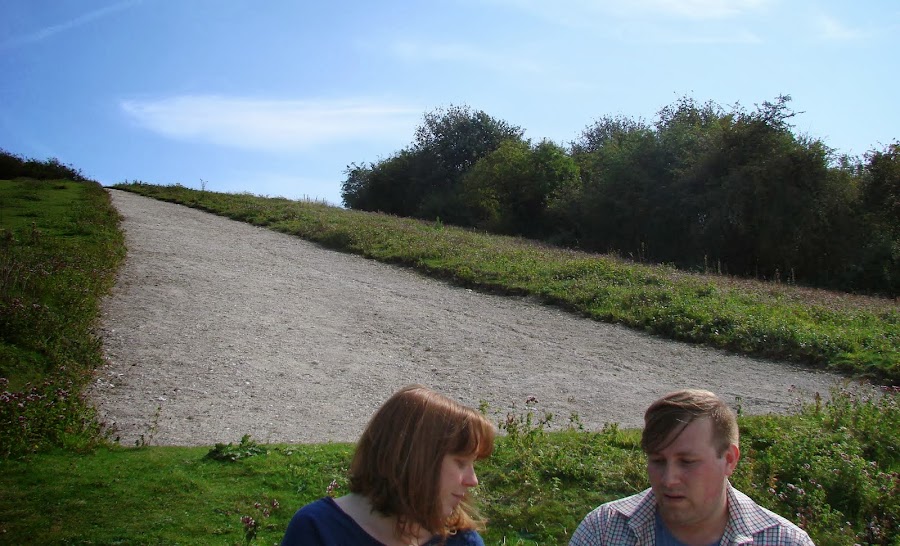
Last weekend we went on a short trip to Cornwall. We were there to play a really fun fish-and-chip fuelled show in Falmouth, in a little pub full of nautical paraphernalia on the harbour (our thanks to Luke and Tom for their efforts in putting this show together). However we managed to fit in more than a little sightseeing.
Top of our list were a handful of Neolithic sites. First up, at the very tip of Cornwall was Lanyon Quoit, probably the most famous of these monuments. At between 2500-3500 thousand years old, its position at the edge of a field off a winding road at the top of a hill is inauspicious.

Although smaller than some of the other sites we have seen recently, there was an impressive gravity to this site. Its small size is a relatively new phenomenon because a storm heavily damaged it in 1815 and attempts to reconstruct it were not able to recreate it accurately, as the stones were so badly damaged. Originally the horizontal stone, known as the capstone, was over 7 feet high and a man on a horse could sit underneath. Like many of these stones, its original function is not clear, but the capstone at the top puts it in to the dolmen portal category of stones - which suggests that it is a burial chamber (it is surrounded by barrows). It would be a bleak but remarkable place to bury your dead, at the peak of a hill in a place which feels even now like the end of the world.
Second on our list, and only a short distance from Lanyon Quoit was something completely different - Men an Tol. This monument comprises a highly unusal circular stone (Men an Tol is "the hole stone" in Cornish) and two standing stones in a line. The stones have always attracted superstitious feeling - some saying that they had healing powers. There are many stories of villagers passing sick children through the hole to cure them, and there has been a long held belief that a woman can increase her fertility by passing through the stone. A stern notice on the stile that led into the field warned people that the stones had recently been repaired and to keep away, but the condition of the grass around the hole stone suggested that the latter belief was still in practice.

The site is hidden in a dip on a plateau, and was only identifiable by the small gathering of people with walking poles stood in the field. There was a young fashionable man in tweed talking very loudly and authoritatively about how wonderful it would have been to have lived in one of the cottages that now stand dilapidated and weather beaten in the surrounding fields and how he was trying to renovate one. I wondered what the rate of infant mortality was for the Cornish families that so long ago fled these fields and not for the first time this trip considered the romantic myth of rural life.
We continued around the coast and almost by accident drove past the Merry Maidens, a classic stone circle that is unusual because it is perfectly circular. Being frozen in stone was the usual punishment for fun loving neolithic Britons, and these maidens had just been having too much fun, the Christians thought they were punished for having a dance on the Sabbath. Like many of the single stones on this part of the coast, the Merry Maidens is comprised of small but consistently sized stones. We loved the juxtaposition of the stones and the bus stop.











































